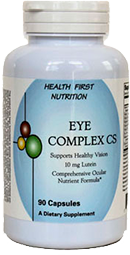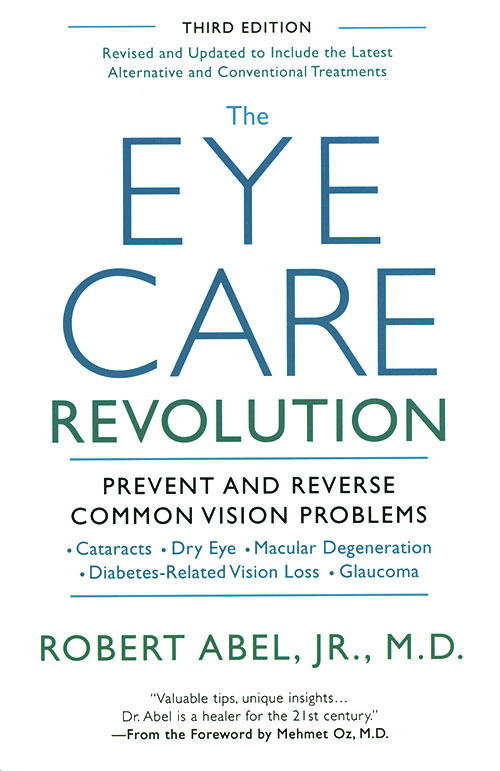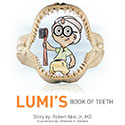What Are Dry Eyes and What Causes Them?
Many people experience dry eyes or eye discomfort some time in their lives. You may find discomfort in an airplane, in a dry, overheated room or in a dusty workplace. But there may be more than 10 million Americans who have a significant dry eye condition that may be related to other symptoms.
Dry eyes can be caused by medication, dehydration, inflammation of the eyelids and/or skin, previous eye surgery, systemic diseases such as rheumatoid arthritis, thyroid disease, lupus, sarcoidosis and even poor blinking habits (such as staring at a computer). The classic Sjogren’s syndrome is a combination of dry eye, dry mouth and arthritis. It affects up to two percent of people suffering from dry eyes.
Tears are not just water. They have three separate components:
- Oil (from the meibomian oil glands in the eyelids).
- Mucous (from the goblet cells deep inside the eyelid).
- Watery tears (the “aqueous” tears from the lacrimal gland and accessory lacrimal glands located in the conjunctiva of the eyelids).
The innermost layer of tears in direct contact with the eye is the mucous layer, which is also call mucin. The mucin coats the surface of the cornea. The middle layer is the watery tears, which stick to the mucin and keep the eye moist. The outer tear layer is composed of oil from the meibomian glands. It is deposited like an oil slick on the outside of the watery tears to slow their evaporation from the surface of the eye. Every time you blink you sweep the tears across the cornea and into the drainage ducts called puncta.
Your tears can be evaluated by the use of vital dyes, breakup time, measurement of tear production (Schirmer test) and even some very fancy measurements of thickness and chemical constitution of the tear film. However, your symptoms will often be your best guide. The symptoms include irritation, burning, redness, mucous accumulations, itching and even light sensitivity. In fact, when cells fall off the cornea, it can be downright painful. Having mild eye muscle problems or having inadequate reading glasses may make the symptoms worse. A routine eye examination will exclude other causes of irritation such as conjunctivitis, faulty glasses or contact lens trouble.
It is important to recognize that this low-grade, chronic irritation is actually a medical problem, so you should begin getting help. Many people have associated lid inflammation called blepharitis or rosacea.
Treatment for Dry Eyes
Dry Eyes treatment is directed at reducing bacteria, demodex mites, inflammation, and improving your diet and environment. A new and dramatic treatment for all of these issues is Avenova (Neutrox 0.o1%). It comes in a spray bottle and is applied on the lids and lashes twice-daily. The active chemical is hypochlorous acid, which is the same chemical made by your white blood cells when they fight infection and inflammation. Avenova provides the broadest single therapy for dry eyes, blepharitis, and what we call “evaporative eye disease”. Sufferers of dry eyes should see results within weeks.
Use artificial tears
These may be non-preserved (sometimes expensive and inconvenient), minimally preserved, or fully preserved. See the Dry Eye chapter in The Eye Care Revolution for more details. There are some new types of artificial tears that give patients more options. Thera Tears has been well received by many patients. Similisan is a homeopathic eye drop. Restasis is a new anti-inflammatory drop that attacks the inflammatory nature of some peoples’ condition. Salagen tabs (5 mg) can be used once or twice daily to increase tears and saliva. Researchers are looking at estrogen and essential fatty acids as other ways to fortify the tear film. Ointments at bedtime are often helpful in reducing morning symptoms.
Punctal plugs
Every time you blink, tears exit through the little holes (puncta) in the inner corner of your eyelids. By plugging the exit route with punctual plugs, the tears you make and those you supply by using eye drops will remain longer. For extreme dry eyes get a prescription for Lacrisert pellets.
Environment
Take a careful look at your home (especially bedroom) and workplace. Is it too dry? Is there any humidity? If you suffer from dry eye symptoms especially in the winter, place a humidifier in your bedroom. Any changes in your environment, such as adding a humidifier in your bedroom or workplace, or to your heating system will be helpful.
Evaluate your diet
- Drink at least six to eight glasses of water a day, and limit sodas, caffeine and alcohol.
- Include fish, soy and other legumes, and seeds such as flaxseed in your diet. These provide essential fatty acids to protect cells and stabilize the tear film.
- Green leafy vegetables, and to a lesser extent meat, supply the B vitamins.
- Eliminate artificial sweeteners since they are irritants to your mucous membrane.
- Omega-3 fatty acids, which come from plants (such as flaxseed, seaweed) or from cold water fish (such as salmon, mackerel, sardines, halibut and cod) are loaded with these good fats. A good supplement is approximately 500 mg of DHA (fish oil), or flaxseed oil twice daily with meals.
- People also report that glucosamine sulfate, chondroitin sulfate and gelatin have also helped their eyes, in addition to their arthritis.
- Promote good digestion through water intake, exercise, lactobacillus (probiotics) and even digestive enzymes if necessary.
- Apply Avenova on a pad to your eyelids twice daily. It is a remarkable new chemical formula that kills bacteria and mites that contribute to both dry eyes and blepharitis. Tell your doctor and your pharmacist. It may eliminate artificial tears, gels, antibiotic ointments, oral antibiotics and steroid eye drops.
Medications
Check out your current medications. Common drugs for intestinal problems, depression, allergy and colds may dehydrate sensitive tissues in your body. If they are necessary, you may have to compensate for this dehydration by drinking more water. Ask your pharmacist or doctor if any of your current medications may cause dry eye.
Remember to blink
Many of us stare at computers and get lost in our work and simply forget to blink. Other people have weak lower lids, which do not contribute the necessary 20 percent to completing a blink. You or your eye doctor may notice that the lower lid doesn’t move with a routine blink. Fortunately, with a forced or voluntary blink, you can close the eye. Inadequate eye closure while sleeping may also contribute to dry eye symptoms.
Treat associated problems
Conjunctivitis or blepharitis will contribute to symptoms and can be treated with a program of short-term antibiotic therapy. Many people who have dry eye will experience headaches, neckaches and other generalized complaints and may not recognize that the dry eye problem is fundamental to their constellation of symptoms. Be aware, take a minute to think about it, and determine if you suffer from this condition. Dry eye may be a hidden cause of your headache and discomfort and is a frustrating condition that may involve more than your eyes. Remember that Avenova may be able to treat them all and reduce your aggravation at work, in the dry heat, at the computer or with sore red eyes.







